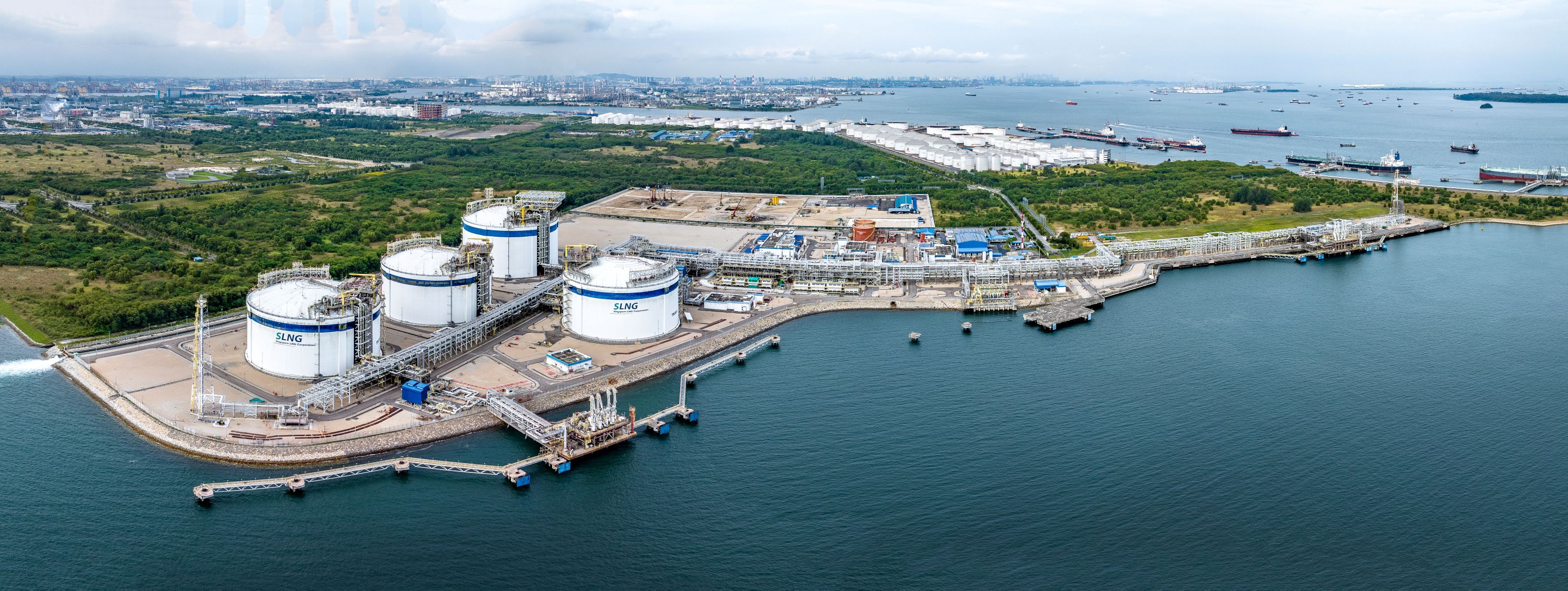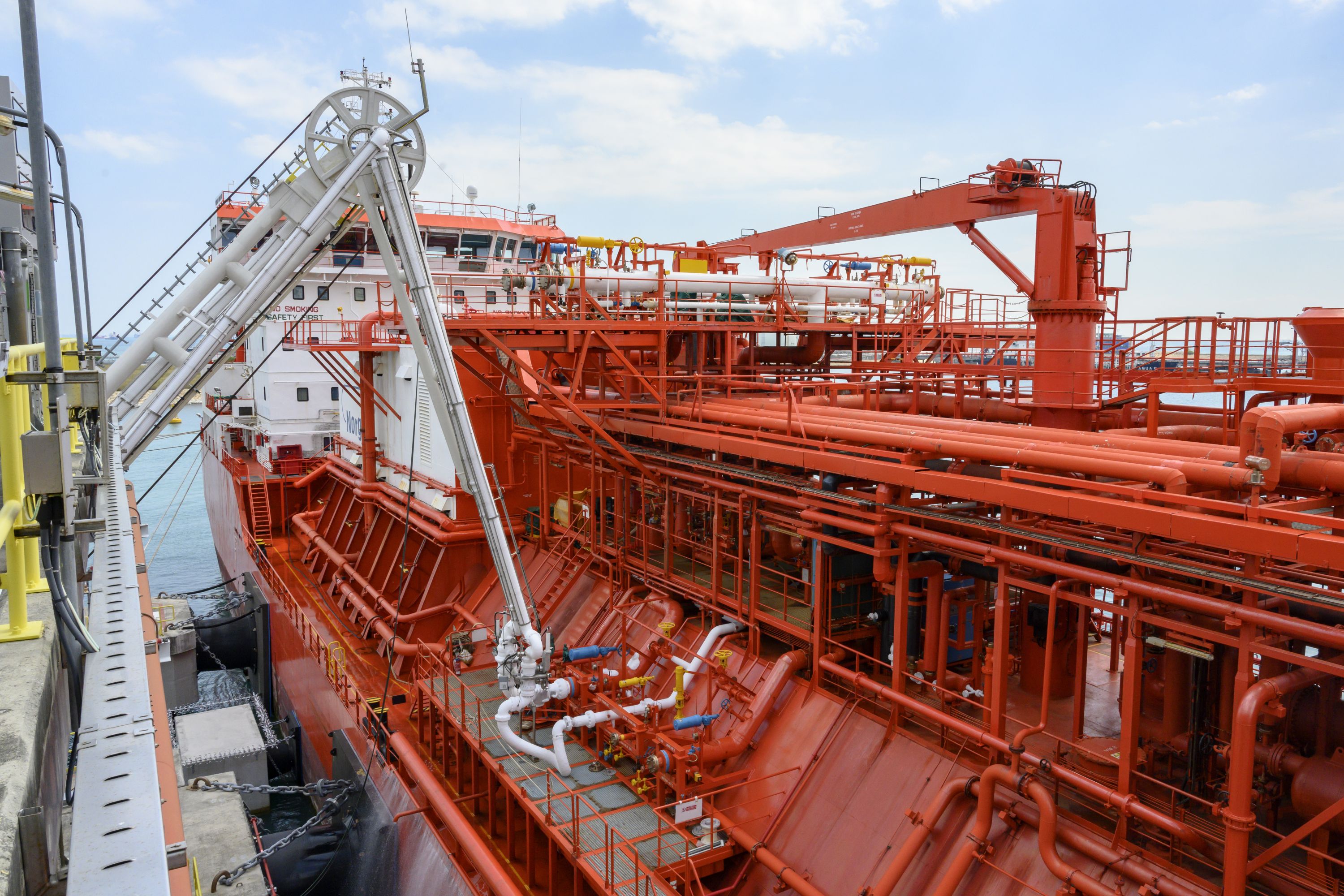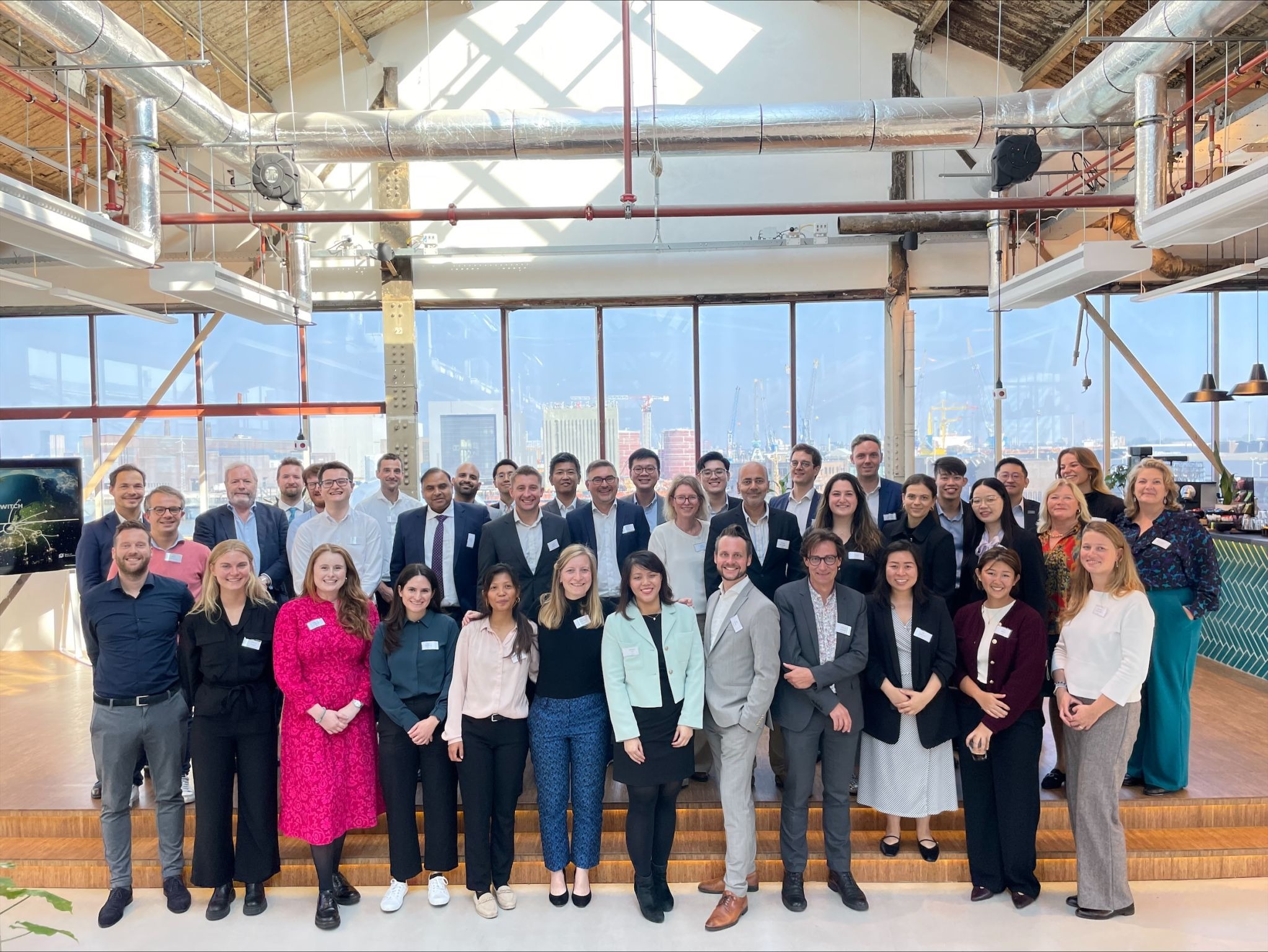Catalysing the LNG Ecosystem and the Energy Transition
In 2013, Singapore’s first Liquefied Natural Gas (LNG) Terminal, owned and operated by Singapore LNG Corporation (SLNG), commenced operations. Since then, the country has built a reliable energy source in LNG and it is expected that LNG will remain a key component of Singapore’s energy mix for some time into the future.
“We’ve seen the share of natural gas in Singapore’s electricity generation grow exponentially from less than 20% in 2000 to over 90% today. When the Terminal first opened, we started with just one jetty and two storage tanks. As the demand for LNG grew over the years, we’ve expanded our infrastructure and services to meet Singapore’s LNG needs, and will continue to do so. While we have explored and developed a range of LNG-related services to meet various industry needs and shifts in the energy landscape, our primary goal and focus is always energy security for the country,” says Atul Nargund, Senior Vice President, LNG Market and Business Solutions.

SLNG Terminal on Jurong Island
The SLNG Terminal currently operates with an annualised average gas supply capacity of 9 million tonnes per annum (Mtpa), and a peak capacity of up to 11 Mtpa. It has two jetties, three storage tanks of 180,000 m³, and a fourth at 260,000 m³, one of the largest in the world. The Terminal contributes to Singapore’s energy security by ensuring uninterrupted send-out of natural gas for domestic consumption, which is mainly in power generation.
SLNG currently supplies about 50% of Singapore’s natural gas for electricity, with the remaining supplied by pipeline gas. If required, the Terminal has sufficient capacity to meet all of the country’s present natural gas demand. Not one to rest on its laurels, SLNG has looked ahead to further expand its capacity and will be developing a Second LNG Terminal for Singapore, ahead of anticipated demand growth. This will be an offshore terminal and is slated to be operational by the end of the decade.
Enabling LNG Adoption and Development of the LNG Ecosystem
While Singapore is making strides towards adopting cleaner alternatives like solar and ammonia for power generation, there are many other industries that still rely on oil or diesel as their primary fuel source. As a readily available and much cleaner fossil fuel, LNG can play a crucial role to help these industries quickly reduce their carbon emissions, while waiting for more sustainable alternatives to develop.
Mr. Nargund shares, “With the smaller carbon footprint, companies can reduce their carbon tax and still meet business needs with natural gas, without compromising operational efficiency. More businesses are headed in that direction, and SLNG is poised to play a significant role to facilitate this transition.”
To support LNG adoption across industries, SLNG, with the support of the Maritime and Port Authority of Singapore, developed an LNG Truck Loading facility that enables small quantities of LNG to be loaded into LNG trucks at the Terminal for overland delivery to where it may be needed. This may include industrial plants not connected to the gas pipeline network or locations in the port from where the LNG may be transferred to ships for use as bunker fuel. Since its launch in 2017, more than 5,000 truck loading operations have been successfully completed at the Terminal. SLNG is planning to expand this facility to meet the increasing demand for LNG trucking services. With the expanded facility, SLNG will be able to support more than 8,000 truck loadings per year, and this will enable further use of LNG for urban energy solutions such as decentralised power generation and central cooling.
With stricter emissions requirements being implemented for the maritime industry, the demand for LNG bunkering in the port of Singapore has grown.
“We have observed a significant increase in the uptake of LNG for bunkering, compared to prior years. In 2024, SLNG safely and successfully completed more than 100 reload operations onto LNG bunker vessels,” says Mr Nargund. “We believe that LNG bunkering demand will continue to grow as LNG remains one of the best options to meet tighter decarbonisation regulations for the maritime sector in the near term. SLNG is prepared to do what it can, including expanding its infrastructure if needed, to help the industry transition and safeguard Singapore’s position as the world’s top bunkering port.”

LNG Bunkering services at the SLNG Terminal
A new wave of new LNG projects coming online will exert downward pressure on LNG prices to support LNG trade and LNG bunkering. LNG bunkering demand in Singapore is anticipated to exceed 2-3 Mtpa by 2035, and SLNG has been studying the need for additional LNG bunkering infrastructure to meet this increase in demand. This may mean increasing jetty capacity at the SLNG Terminal by building out our Tertiary Jetty’s topsides to accommodate more LNG reloads for bunkering.
To drive industry conversations, SLNG organises the SLNG Bunkering Forum every two years, in conjunction with the Singapore International Bunkering Conference (SIBCON), which serves as a platform for industry stakeholders to connect and share their views on the outlook for LNG bunkering and how to collaborate to make Singapore a successful LNG bunkering hub. In its latest edition in 2024, the Forum expanded its scope to also explore alternative marine fuels like ammonia.
SLNG also offers services that support LNG trading, to help further develop the LNG ecosystem. These include gassing-up and cool down, transhipment, storage and reload, and more.
“More than simply being an LNG terminal operator, we want to be a catalyst for the development of a vibrant, coherent and progressive LNG ecosystem that supports Singapore’s ambition to be an LNG hub for the region,” says Mr. Nargund. “We work closely with key partners and stakeholders to understand the needs of the market and strengthen our offerings to support the LNG ecosystem.”
Supporting the Adoption of Green Energy Sources
Beyond services involving LNG, SLNG is also actively advancing the energy transition, through its participation in the exploration of cleaner, greener energy sources, and efforts to enable carbon capture and sequestration.
“We are working with different industry partners to explore alternative energy sources such as hydrogen, ammonia, and even bio-LNG,” shares Mr. Nargund. “We are part of a consortium with Sembcorp that has been selected by Energy Market Authority (EMA) and the Maritime and Port Authority of Singapore (MPA) to proceed to the next round of the Request for Proposal process to provide a low- or-zero-carbon ammonia solution on Jurong Island, for power generation and bunkering. We are also a partner of the Rotterdam-Singapore Green and Digital Shipping Corridor. One of the key projects under this initiative that we’re contributing to is to explore piloting bio-LNG bunkering in Singapore and Rotterdam.”

Photo credit: Maritime and Port Authority of Singapore
Singapore, as one of the world’s busiest ports and a global maritime hub, has the opportunity to drive an uptake of alternative fuels such as ammonia and bio-LNG to help reduce emissions and support the International Maritime Organisation (IMO)’s 2050 net-zero target. With its advanced bunkering infrastructure and expertise in energy sources, Singapore can serve as a hub for driving the adoption of new energy sources. SLNG is engaged in these conversations and is playing an active role in exploring solutions.
To advance its progress towards meeting decarbonisation goals, the Singapore Government is constantly looking to expand its suite of decarbonisation measures. In 2024, the Government announced that it will be boosting research and development in carbon capture and storage (CCS). CCS has been identified as a potential pathway to decarbonise hard-to-abate emissions for which there are no ready alternative solutions.
“At SLNG, we are also exploring ways to harness the cold energy released during the LNG regasification process at our Terminal. This untapped resource can be an invaluable asset to, for example, liquefy carbon dioxide without the need to generate additional power for cooling. The liquefied carbon dioxide could then be sequestered or transported elsewhere for other purposes, contributing to both environmental protection and the circular economy. Internationally, carbon capture and storage is recognised as an important decarbonisation pathway to global climate mitigation, and we want to be able to play our part,” says Mr. Nargund.
Looking Ahead
The energy landscape is evolving. As the world transitions towards greener and sustainable energy sources, it also needs to continue on a path of social and economic growth. This requires a stable power grid and a continuous energy supply, which at the moment can only be met by dispatchable resources like natural gas. SLNG is simultaneously looking ahead to support the energy transition, while at the same time holding the fort to ensure energy security for Singapore.
“We have our fingers on the pulse of what’s happening in the energy landscape, and what is to come. Being attentive to changing needs helps the company monitor trade flows and changes in regional and global supply and demand patterns, while adapting and developing innovative ways to address supply and demand changes,” says Mr. Nargund. “We are Catalysing New Possibilities in the Energy Transition – for both Singapore’s energy security, and its energy future. It will be exciting times ahead for SLNG.”

